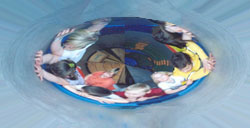Motor Skills Performance and Pedometer-Determined Physical Activity in Young Children.
This study examined the association between motor skills and pedometer-determined physical activity in a sample of preschool children. One hundred and seventeen children (61 boys, 56 girls) 5-6 years old (M=67.18 months, SD=3.802) who live in Agrinio, Aitoloakarnania Greece, volunteered to participate in the current study. A trained researcher administered the measurements for the assessment of children’s motor skills by using the Short Form of the Bruininks-Oseretsky Test of Motor Proficiency-2 (BOTMP-SF). Physical activity was assessed by OMRON HJ-720IT pedometers. Based on performance in BOTMP-SF, participants were categorized into three groups, namely, “below average”, “average”, and “above average”. The results showed a statistically significant association between motor skills performance and steps.day-1 (Kruskal-Wallis x2=34.23, p<.001). Comparisons between motor skills categories showed significant differences in steps.day-1 between the "below average" and "average" groups (Mann-Whitney U=50, p<.001) and between "below average" and "above average" groups (Mann-Whitney U=7, p<.001). Results showed that increased levels of children's physical activity encourage and positively affect motor development.
Motor Skills Performance and Pedometer-Determined Physical Activity in Young Children. Read More »






